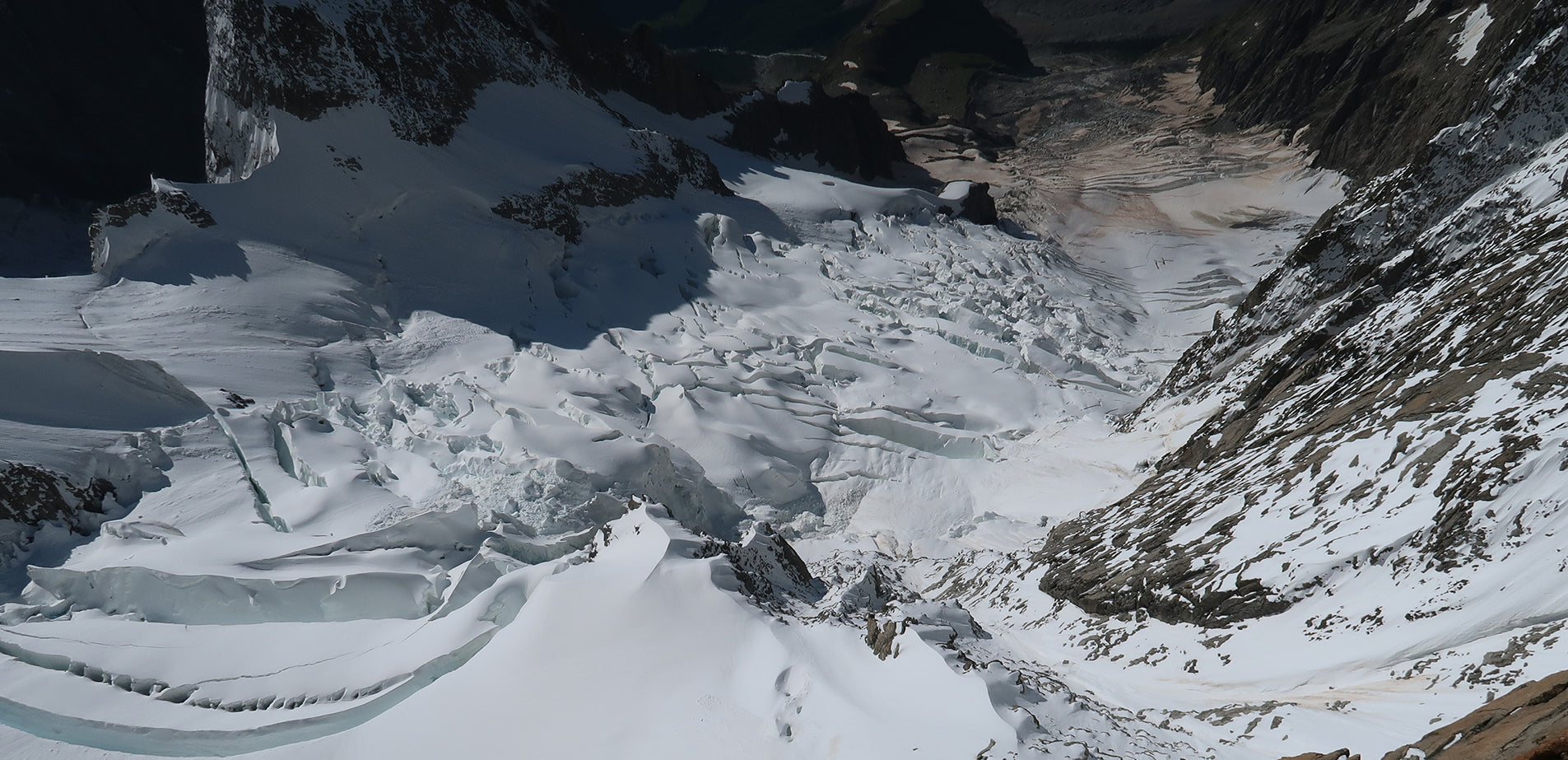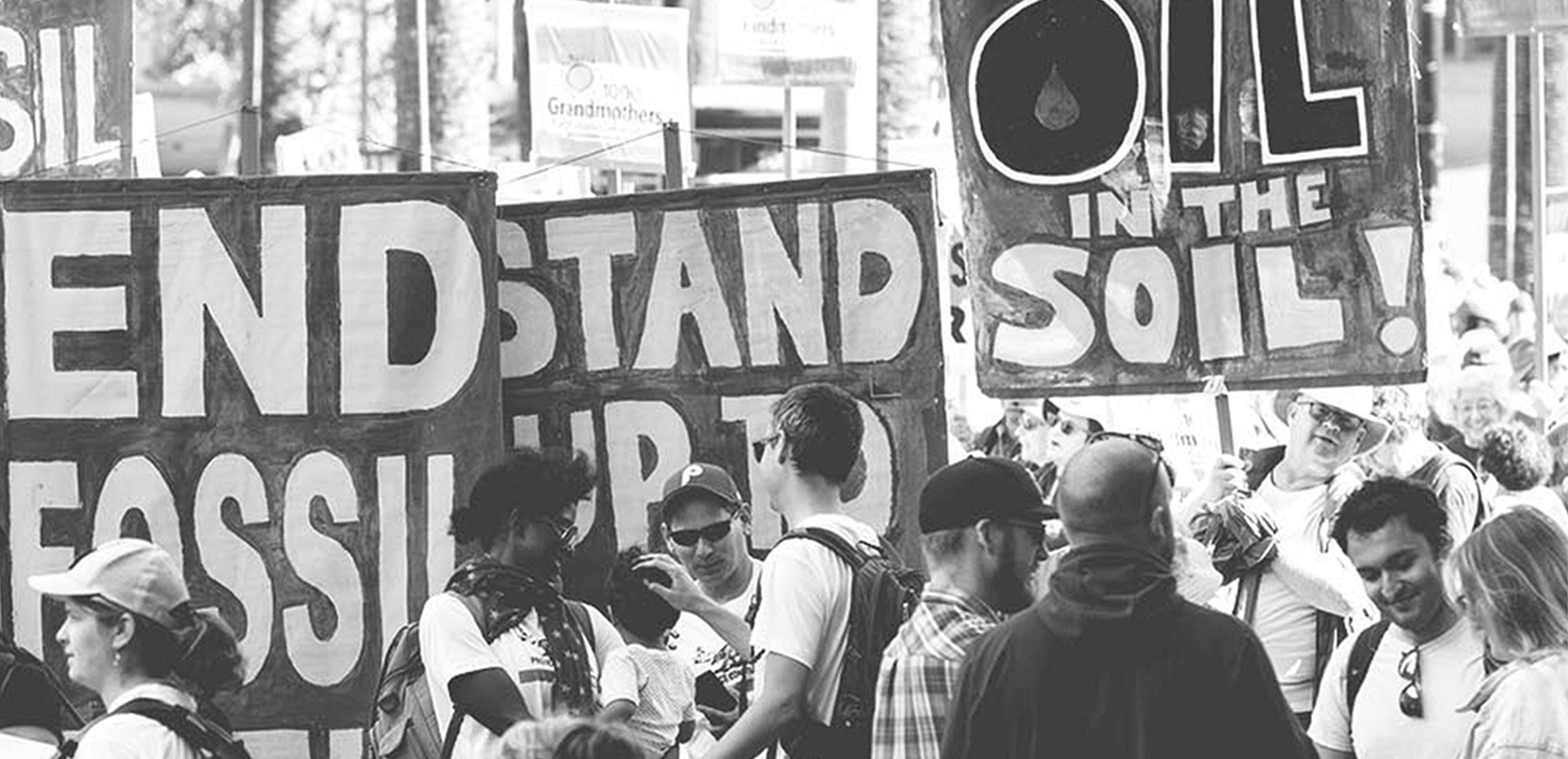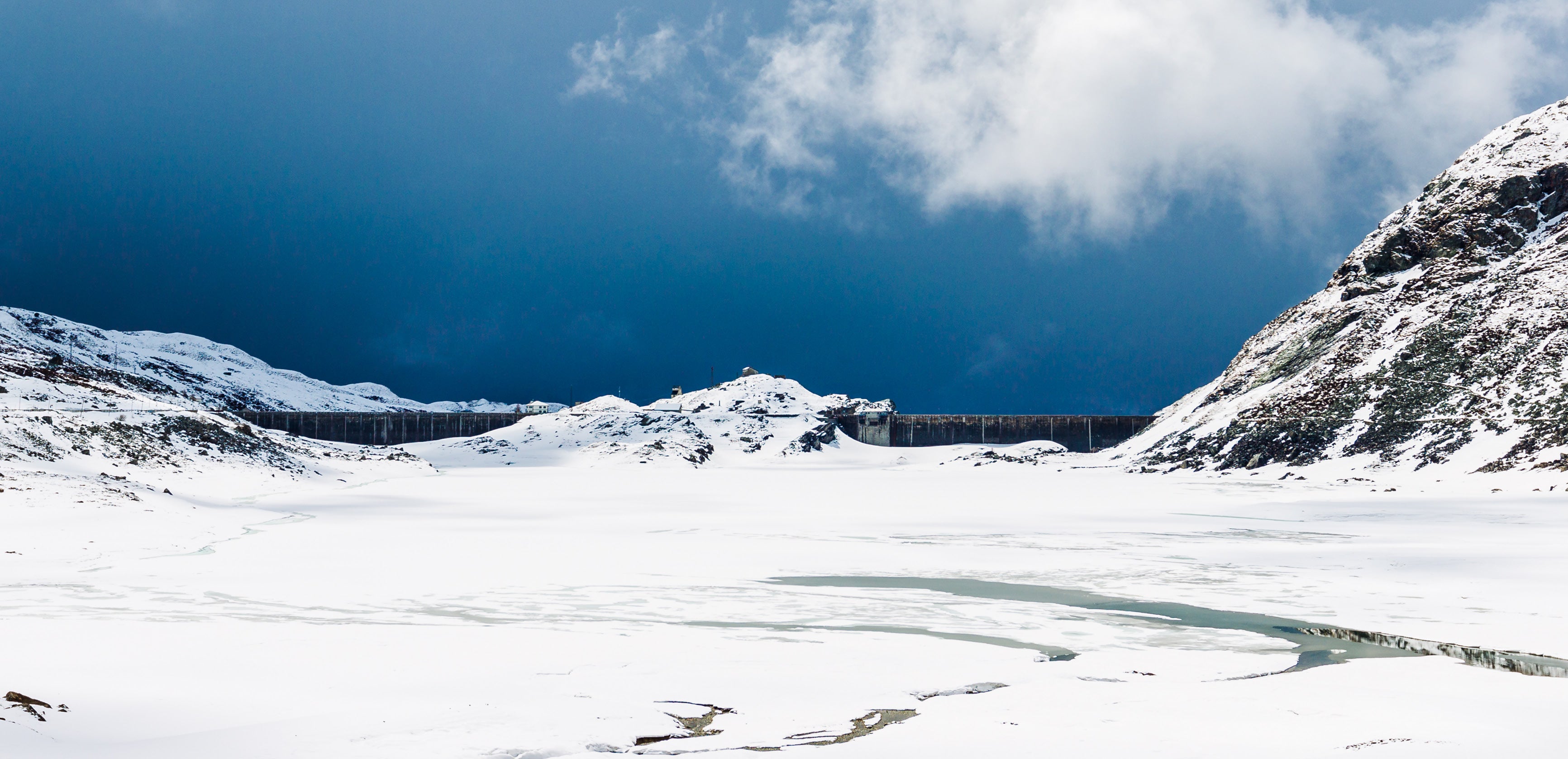
Wrapping glaciers to save them? - by Marco Grasso
Published on 29/10/2021
The summer of 2021 was the hottest on record both in Europe and the United States; July 2021 was the hottest month ever recorded; the ten warmest years occurred after 2005, while the six warmest after 2015.
The torrid heat is one of those – excuse the banal pun – hot topics that are truly emblematic of climate change, in fact the one that triggers its countless cascading effects. In most places it is already hotter than our bodies can stand. Humans are not supposed to live in temperatures that high: when our core body temperature reaches 42°C, death can be imminent. As humans, we can only adapt so much. Once the air temperature is above 48°C, there’s not much to do, except rely on air-conditioning and other mitigation strategies.
 What should be done? This is what we have been talking about and negotiating for decades, and unfortunately it turned out to be much ado about nothing. A molehill was made out of a mountain – pun intended, of course – to the point that we find ourselves in the situation of fervently wishing that the temperature will only get 2°C hotter than the pre-industrial level.
What should be done? This is what we have been talking about and negotiating for decades, and unfortunately it turned out to be much ado about nothing. A molehill was made out of a mountain – pun intended, of course – to the point that we find ourselves in the situation of fervently wishing that the temperature will only get 2°C hotter than the pre-industrial level.
We cling to this figure hopefully but also a little bitterly, and meanwhile the new mantra is "watch out, the weather has changed, better to protect yourself": hat, sunscreen, a bottle of water are now mandatory items for summer walkabouts.
Right, better safe than sorry; but what about protecting our planet altogether as well? Animals, plants, Earth’s bounties, the Earth itself?
 To be honest, if all those who are concerned about the state of our planet had to wait for political decisions to guarantee its safety in the midst of the current climate crisis, perhaps our beautiful and unique nest would already be in a state of irreversible misery. In a previous piece we talked about the effort to preserve and regenerate the ecology of territories; there is a particularly vulnerable territory though, the frozen one. As we have already said heat is shrinking mountain glaciers from the Alps, to the Himalaya and the Andes. In a nutshell, ice is suffering: it is melting worldwide especially at the Earth’s poles, where climate is changing and temperatures are increasing at an extremely rapid pace. While in the 1990s, our planet lost roughly 800 billion tons of ice each year, today, due to increasing air temperatures, that number has surged to around 1.2 trillion tons: altogether, 28 trillion tons of ice disappeared between 1994 and 2017. This mass melting has even caused a shift in the Earth’s axis of rotation since the 1990s.
To be honest, if all those who are concerned about the state of our planet had to wait for political decisions to guarantee its safety in the midst of the current climate crisis, perhaps our beautiful and unique nest would already be in a state of irreversible misery. In a previous piece we talked about the effort to preserve and regenerate the ecology of territories; there is a particularly vulnerable territory though, the frozen one. As we have already said heat is shrinking mountain glaciers from the Alps, to the Himalaya and the Andes. In a nutshell, ice is suffering: it is melting worldwide especially at the Earth’s poles, where climate is changing and temperatures are increasing at an extremely rapid pace. While in the 1990s, our planet lost roughly 800 billion tons of ice each year, today, due to increasing air temperatures, that number has surged to around 1.2 trillion tons: altogether, 28 trillion tons of ice disappeared between 1994 and 2017. This mass melting has even caused a shift in the Earth’s axis of rotation since the 1990s.
It is therefore certainly interesting – and instructive – to see what scientists, activists, and artists propose and do to protect and guarantee the stability of frozen territories. One approach seems particularly appealing in its apparent naiveness: it is an almost desperate act of protecting mountain glacier’s peaks through an imaginative technique. Covering them with large white blankets so that the sun’s rays are reflected rather than absorbed by the ice. It’s a bit like putting on a T-shirt to avoid over exposition to the sun on a bright summer day.

Called geotextiles, these blankets, typically, consist of polyester and polypropylene fibres and are manufactured in rolls 50 meter long and 4 to 5 wide; they weigh about 0.5 kilos per square meter and are 3-4 millimetre thick. Geotextiles used for protecting ice have a high albedo effect and reflect more short-wave radiation than melting snow and ice surfaces. By so doing, they significantly reduce the overall energy available for glaciers to melt. Additionally, geotextiles’ semi-permeable characteristics inhibit the formation of puddles that would heat and affect the snow through water infiltration. At any rate, it seems to be working.
In the Swiss Alps this technique has been used since 2009: some glacier ski resorts and chunks of glaciers sought-after by tourist are using geotextiles. For instance, from the town of Belvédère in the Alps of southern Switzerland, it’s possible to stroll through the Rhône Glacier, one of Europe’s largest, through a 100-metre tunnel dug in 1870. Paying visitors – who pay for such a whim through the nose – could walk through a frozen grotto suffused with the various tones of blue produced by the ice-filtered sunlight. Between 2011 and 2016, the Rhône glacier retreated by about 150 meters. To slow the ice melt, the family managing the grotto came up with the idea of covering their portion of the glacier with blankets to reflect the sunlight. To many extents, this Sisyphean task of remedying the environmental devastation of climate change works: geotextiles are able to save small portions of glaciers. Unfortunately, they cannot be employed on entire glaciers on a global scale. While these fabrics could reduce glacial melt by 59% locally, the strategy is too expensive to protect the more than 1,165,000 square kilometres of glaciers around the world. In a recent study Swiss scientists conclude that “measures to artificially reduce ice melt with the purpose of saving glaciers at the mountain-range scale are clearly unsustainable.” All in all, the use of geotextiles to protect ice is just for those portions of glaciers that have stable winter incomes that enable funding this expensive technique during summer months.
To many extents, this Sisyphean task of remedying the environmental devastation of climate change works: geotextiles are able to save small portions of glaciers. Unfortunately, they cannot be employed on entire glaciers on a global scale. While these fabrics could reduce glacial melt by 59% locally, the strategy is too expensive to protect the more than 1,165,000 square kilometres of glaciers around the world. In a recent study Swiss scientists conclude that “measures to artificially reduce ice melt with the purpose of saving glaciers at the mountain-range scale are clearly unsustainable.” All in all, the use of geotextiles to protect ice is just for those portions of glaciers that have stable winter incomes that enable funding this expensive technique during summer months.
The debate raised by the use of geotextiles, however, does not concern its efficiency, or its cost altogether. It rather involves crucial climate and ecological issues: blanketing glaciers acts on the direct effects of the rise in temperature and the transformation of territories. The potential impacts, as can be easily imagined, are immense. In the first place, this transformation implies adaptation costs; second, it changes how the territory will be used economically; third, by modifying the environmental regularity, it generates particularly worrying risks with regard to those resources which are indispensable on a daily basis, such as water.
We argued that geotextiles, like other manipulative interventions to modify the climate system or its impacts, are useful at the local scale if connected to profitable activities that can sustain their high cost. But upscaling them would entail exceptional impacts on both the landscape and the environment with inevitable ethical conundrums. Despite the lure of their potential effectiveness and a related somewhat blind faith in science and technology, large-scale manipulative techniques’ uncertainties and problems, coupled with as yet manifestly insufficient factual knowledge, have contributed to generating a rational fear that ‘hacking the planet’ could/would have undesirable and potentially appalling outcomes and implications.
And here we find ourselves caught in one of the archetypical conflicts of climate policy: how to strike a balance between the actual usefulness of this kind of techniques and the degree to which they are just another human attempt to dominate the planet – another tile in the anthropocentric mosaic – and to further push back the inevitable acknowledgment of the ongoing global ecological crisis and the consequent – costly – measures. This is no mean feat, given the overall complexity and implications that these approaches would have on national, regional, and global socioeconomic systems. There is a fine tightrope being trodden, on the one side hope, on the other despair… The seemingly naïve attempt of coddling glaciers in blankets like a precious newborn to ensure their survival is really a hot topic.

Marco Grasso is Professor of Economic and Political Geography at the Università of Milan-Bicocca. His research interests include international environmental policy and climate change governance. He currently works on a project on the role of the fossil fuel industry in climate change and the decarbonisation of energy systems.


